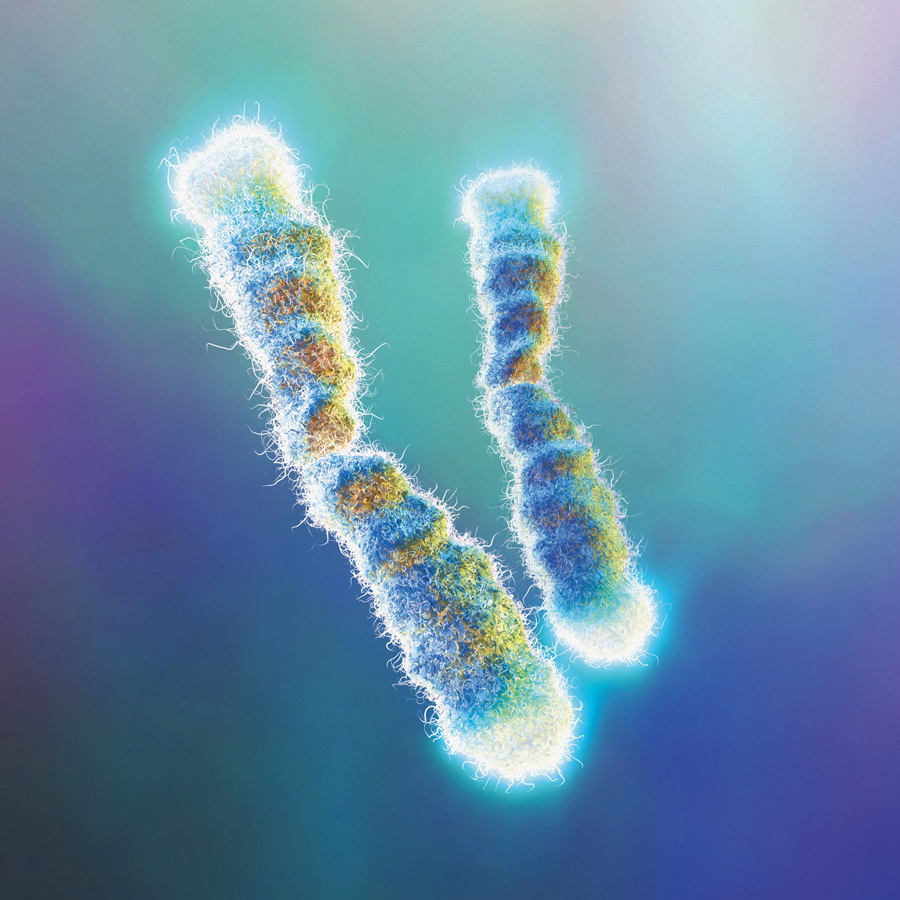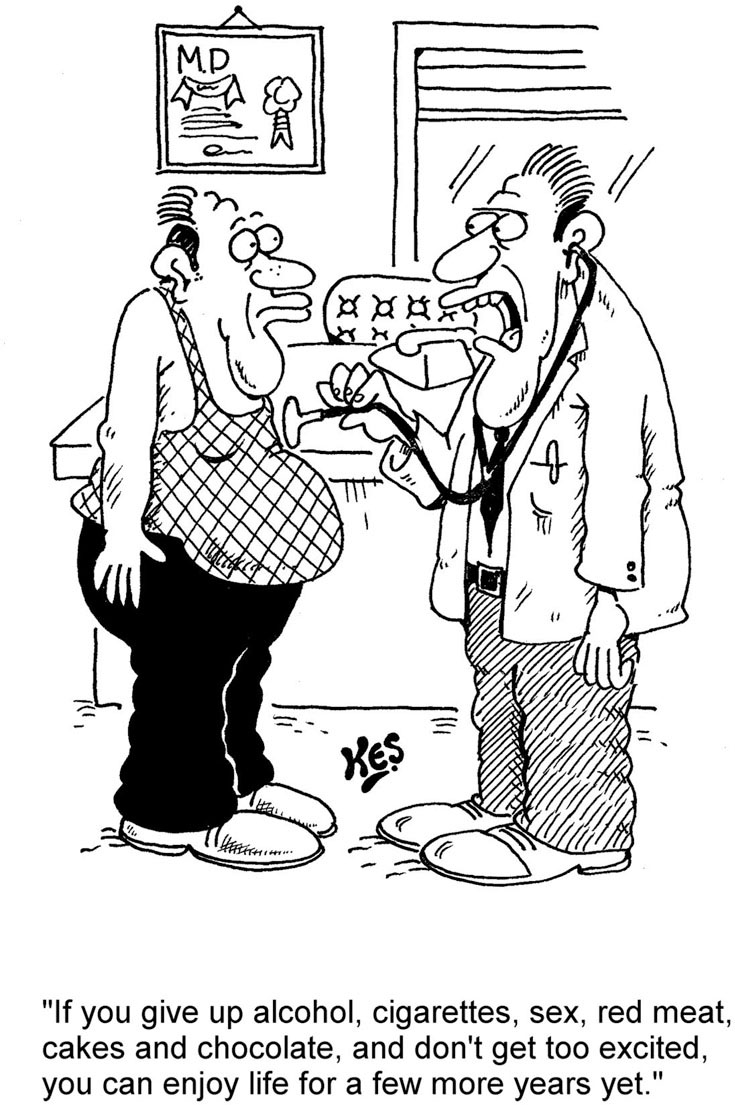23.4 Theories of Aging
Underlying all the conditions and diseases just reviewed is a fundamental question: Why do people age? If we could stop senescence, we could stop primary aging, reducing all the diseases of the old—
689
Wear and Tear
wear-
The oldest, most general theory of aging is known as wear-
Is this accurate? For some body parts, yes. Athletes who put repeated stress on their shoulders or knees often have chronically painful joints by middle adulthood; workers who inhale asbestos and smoke cigarettes damage their lungs; repeated blows to the head destroy the brain.
Especially for Biologists What are some immediate practical uses for research on the causes of aging?
Response for Biologists: Although ageism and ambivalence limit the funding of research on the causes of aging, the applications include prevention of AIDS, cancer, neurocognitive disorders, and physical damage from pollution—
Sometimes the body wears out because of exposure to the elements, or things in the diet, or pollution, or radiation. For instance, skin cancer is caused partly by too much sun, clogged arteries are caused partly by too much animal fat, and some cancer tumors may result from too many oxygen-
However, wear-
In fact, an overreliance on the wear-
Genetic Theories
genetic clock A purported mechanism in the DNA of cells that regulates the aging process by triggering hormonal changes and controlling cellular reproduction and repair.
A second cluster of theories focuses on genes (Sutphin & Kaeberlein, 2011). Humans may have a genetic clock, a mechanism in the DNA of cells that regulates life, growth, and aging. Just as genes trigger the beginning of puberty at about age 10, genes may also switch on to cause aging. For instance, when an older person is injured, aging genes increase the damage so that an infection spreads rather than being halted and healed as it was earlier (Borgens & Liu-

Evidence for genetic aging comes from premature aging. Children born with Hutchinson-
Other genes seem to program an extraordinarily long and healthy life. People who reach age 100 usually have alleles that other people do not (Halaschek-
There are also common genes that seem to trigger an early death. Almost every illness of secondary aging tends to occur in families, suggesting a genetic link. Another allele of the ApoE gene, ApoE4, increases the rate of death by heart disease, stroke, dementia, and—
690
Hundreds of genes hasten the aging of one body part or another, such as genes for hypertension or for many forms of cancer. Certain alleles—
Primary aging also is genetic. Diabetes, a disease that accelerates many signs of senescence, is one example. Type 1 diabetes (childhood onset), seems entirely genetic. Type 2 (adult onset) is triggered by excess weight, but genes are also a factor. Actually, dozens of genes are relevant. Some diabetes genes are shared across ethnic groups and some are more common among African Americans, who have higher rates of type 2 diabetes than other U.S. groups (Palmer et al., 2012).
Surely you have noticed that most overweight people do not become diabetic; their genes protect them. Unfortunately, some people with normal weight do develop diabetes—
Why would human genes promote aging? Evolutionary theory provides an explanation (Hughes, 2010). Societies need young adults to reproduce the next generation and then need elders to die (leaving their genes behind) so that scarce resources were devoted to the reproduction and rearing of the new generation. Thus, genetic aging may be harsh to older individuals but benevolent for communities.
Cellular Aging
cellular aging The cumulative effect of stress and toxins, causing first cellular damage and eventually the death of cells.
The third cluster of theories examines cellular aging, focusing on molecules and cells. Toxins damage cells over time, so minor errors in copying accumulate (remember, cells replace themselves many times). The job of the cells of the immune system is to recognize pathogens and destroy them, but the immune system weakens with age as well as with repeated stresses and infections (Wolf, 2010).

Eventually the organism can no longer repair every cellular error, resulting in senescence. This process is first apparent in the skin, an organ that replaces itself often. The skin becomes wrinkled and rough, eventually developing “age spots” when cell rejuvenation slows down. The longer that cells are exposed to toxins, the more they break down. For example, the skin on your hands is rougher than the skin on your belly—
Cellular aging also occurs inside the body, notably in cancer, which involves duplication of rogue cells. Every type of cancer becomes more common with age because the body is increasingly unable to control the cells. Some research suggests that the cells are not the actual cause of aging, but that the mitochrondria surrounding the cells mutate with time and trigger aging of the cells, thus causing aging of the body. This process may begin in childhood, or even in the womb, depending on the mother’s diet (Khrapko, 2011).
Hayflick limit The number of times a human cell is capable of dividing into two new cells. The limit for most human cells is approximately 50 divisions, an indication that the life span is limited by our genetic program.
Even without specific infections or stresses, healthy cells stop replicating at a certain point. This point is referred to as the Hayflick limit, named after the scientist who discovered it. One cellular change over time occurs with telomeres—
691
The length of telomeres, which is related to cellular aging and death, is also affected by stress. The more stress a person experiences, from childhood on, the shorter their telomeres are in late adulthood and the sooner they will die (Lin et al., 2012).
Hayflick himself believes that the Hayflick limit, and therefore aging, is caused primarily by a natural loss of molecular fidelity—
Research finds that telomere length is about the same in newborns of both sexes and all ethnic groups, but by late adulthood telomeres are longer in women than in men, and longer in European Americans than in African Americans (Aviv, 2011). There are many possible causes, but cellular aging theorists focus on the consequences: Women outlive men, and European Americans outlive African Americans.
Calorie Restriction
calorie restriction The practice of limiting dietary energy intake (while consuming sufficient quantities of vitamins, minerals, and other important nutrients) for the purpose of improving health and slowing down the aging process.
Could eating and digesting food be stressful in some way to the body? Calorie restriction—the drastic reduction in the usual number of calories consumed daily while still maintaining ample vitamins, minerals, and other important nutrients—
Much remains to be understood; application to humans is controversial. Calorie restriction has been called “a fact in search of a theory.” It seems to work at the cellular level, but “the molecular mechanisms by which such a simple intervention has such a stunning effect have eluded researchers for decades” (Masoro & Austad, 2011, p. xi).

Generally, compared with no restrictions, underfeeding a living organism (the early research was on fruit flies) extends the life span of many lower animals and insects in controlled laboratory conditions. The specifics of diet and timing may be crucial, although they are not yet understood.
Application to humans and other primates is particularly complicated: Some research on monkeys finds that calorie restriction extends life, but other studies do not (Mattison et al., 2012).
Looking at all the research, we find that rats seem to receive more benefit than mice, and that some species of mice do not live longer on restricted diets. Indeed, undereating shortens the life of some kinds of mice rather than extending it (Swindell, 2012). The results may depend on small genetic differences between one strain of mouse and another, but specifics are not known. Longevity may depend on the details of the restricted diet, but again scientists do not know what those details might be.
The result from lower animals, and data from the 7,000 people who voluntarily undereat and belong to a group in the Calorie Restriction Society, are intriguing (Roth & Polotsky, 2012). Their rate of diabetes, for instance, is almost zero. But obviously people who join the group are not a cross section of humans. Proof would require controlled experiments.
Consider what would be needed to perform a valid study. First researchers would need hundreds of participants, from all SES levels and ethnic groups. Then half would be randomly assigned to eat 1,800 calories daily, while the other half would eat normally, about 3,000 calories a day.
692
People in both groups would be studied for decades, to see when and why they sickened and died. Periodic checks would ensure they were sticking to their diets and also measure heart rate, breathing, and dozens of biomarkers in their blood, urine, and so on. The checks would be objective, by technicians who did not know who was in which group, or even what the study was about.
No one under 21 or potentially pregnant would be included. All the participants would be told that their calorie restriction would reduce their sex drive, cause infertility, weaken bones and muscles, affect moods, decrease energy, and affect other body functions. The advantage would be to prevent diabetes and early death, but no promises could be made—
Given all that, it would be difficult to recruit even a dozen people from the general population. However, in several places (e.g., Okinawa, Denmark, and Norway), wartime occupation by an enemy forced severe calorie reduction plus healthy diets (mostly fresh vegetables) on entire populations. The result was a markedly lower death rate (Fontana et al., 2011).
Similar results were reported from Cuba, as already mentioned in Chapter 20. Cuba’s main export is sugar, and a sugar embargo by the United States led to food and gas shortages from 1991 to 1995. As a result, people ate local fruits and vegetables, walked more, and lost weight—
The economic crisis ended in Cuba in 1996, and in the 15 years since then the rates of obesity, diabetes, heart disease, and death have risen (Franco et al., 2013). Apparently, the Cubans were glad they could drive their cars and eat more, but doctors and scientists were discouraged. Perhaps people want the comforts of life more than longer lives.
How to Stop the Clock

Many scientists, as well as older people, seek a way to extend life without sacrifice. Exciting results have been reported for drugs that increase sirtuins. They may extend life, but once again, recent research raises questions (Couzin-
Sirtuins are proteins (mammals have 7 sirtuins naturally) that extend the life of yeast, fruit flies, and mice—
Some researchers still believe sirtuins slow the progress of various diseases that affect the brain, including Alzheimer’s and Parkinson’s (Herskovits & Guarente, 2013). The mechanism by which sirtuins operate is thought to be cellular, with effects similar to calorie restriction but without the need for dieting. That may be, but the history of research on anti-
All the theories of aging, and all the research on genes, cells, calorie restriction, sirtuins, anti-
693
Many people hope for some drug or food (blueberries? red wine? fish oil?) to slow down aging. However, many middle-
SUMMING UP
There are hundreds of theories of aging. The wear-
Cellular theories focus on damage from oxygen-